Key takeaways:
- Self-directed learning fosters curiosity, motivation, and ownership of one’s educational journey, significantly enhancing personal growth.
- Providing choice, incorporating reflective practices, and emphasizing peer learning are essential strategies for cultivating self-directed learning in workshops.
- Creating a supportive environment, characterized by trust and positive reinforcement, enhances participant engagement and confidence in their learning process.
- Effective evaluation of self-directed learning outcomes can be achieved through self-reflection, observational shifts in engagement, and peer feedback, fostering community and accountability.
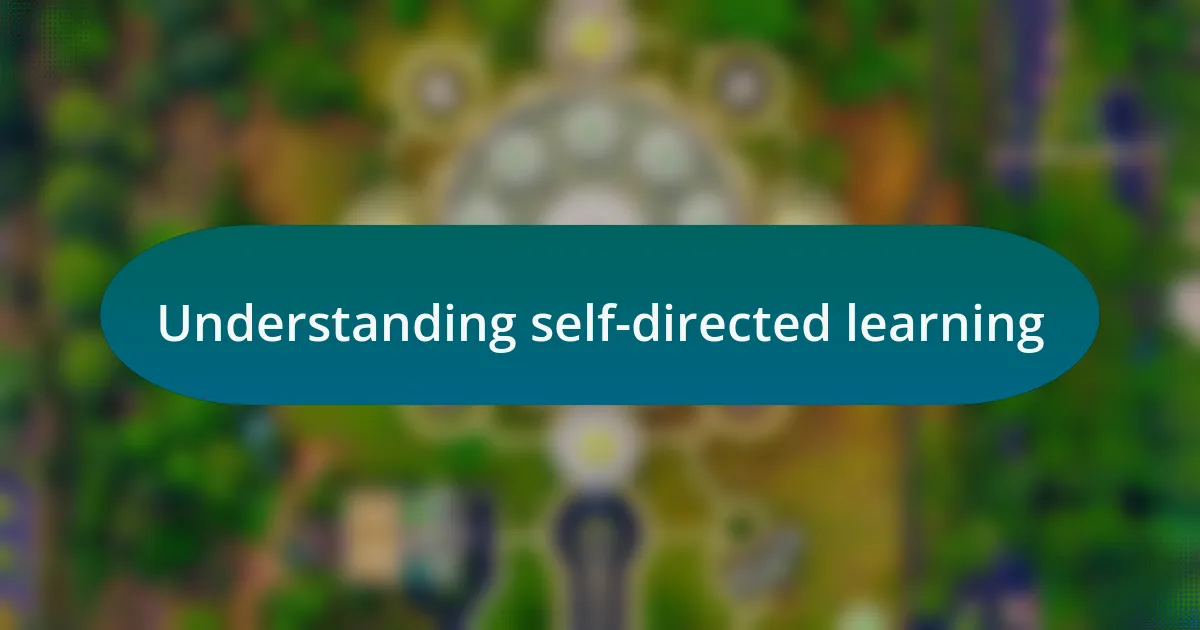
Understanding self-directed learning
Self-directed learning is an empowering approach that enables individuals to take charge of their own educational journey. I remember leading a workshop where participants expressed their desire for greater autonomy in their learning paths. It was a revelation to see how allowing them to choose their topics not only boosted motivation but also ignited a genuine passion for knowledge.
At its core, self-directed learning thrives on curiosity and self-motivation. Have you ever noticed how enthusiastic learners become when they explore subjects that ignite their interest? I’ve seen participants transform when they engage with materials they’ve chosen, breaking free from the traditional confines of predefined curricula. This process not only enhances their skill set but also fosters a sense of ownership and accountability for their growth.
Moreover, the landscape of self-directed learning is continuously shaped by technology and resources available at our fingertips. During a recent event, I watched as attendees utilized online platforms to dive deeper into topics of their choice, showcasing not just their thirst for knowledge but also the adaptability required in the fast-paced tech world. Isn’t it fascinating how self-directed learning not only facilitates skill acquisition but also cultivates a pathway for lifelong learning?
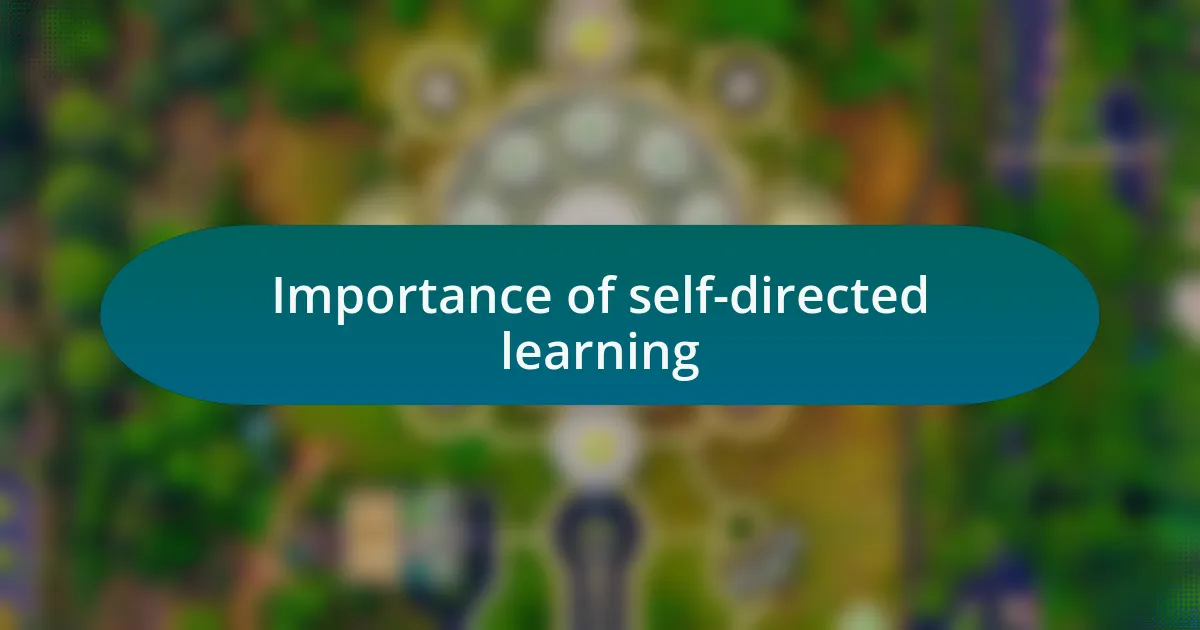
Importance of self-directed learning
Self-directed learning is crucial because it aligns education with individual interests and needs. I recall a time at a tech workshop where participants chose projects based on their passions. The energy in the room was palpable; it’s amazing how personal relevance can transform the learning experience into something truly dynamic and engaging.
This approach also nurtures resilience and adaptability in learners. For instance, I’ve seen attendees navigate challenges independently when pursuing self-chosen topics. Each hurdle they faced became a crucial part of their learning journey, teaching them to problem-solve and persevere. Isn’t it incredible how such experiences equip them for real-world scenarios in the tech industry?
Furthermore, self-directed learning fosters critical thinking skills. In a recent session, I encouraged participants to present their findings to each other. The discussions that emerged were enlightening. By articulating their thoughts and defending their perspectives, they developed a depth of understanding that far surpassed rote memorization. Doesn’t this kind of engagement truly elevate the learning process?
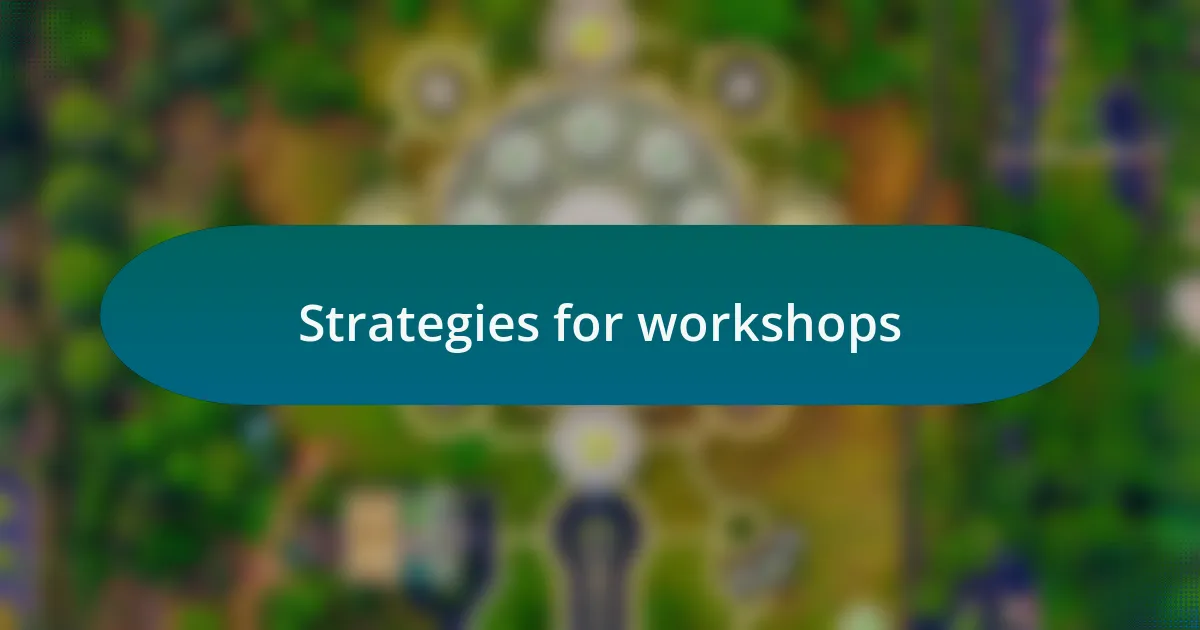
Strategies for workshops
To foster a culture of self-directed learning in workshops, providing choice is essential. I remember one workshop where I allowed attendees to select from various technology tracks, each focusing on different skills, such as coding, design, or project management. The moment participants realized they had the autonomy to choose what resonated with them was transformative. It sparked conversations and collaboration that simply wouldn’t have happened otherwise—how could anyone not feel more invested in their learning journey?
Incorporating reflective practices also plays a significant role. After each hands-on session, I would encourage participants to write down what they learned and how they might apply it in real-world scenarios. This exercise led to some truly heartfelt reflections, with many participants expressing newfound confidence in their abilities. Have you ever found that a moment of personal reflection can lead to significant breakthroughs in understanding?
Lastly, the emphasis on peer learning cannot be overstated. I often pair up participants for mini-projects, where they teach each other a specific skill. I’ve witnessed friendships form and knowledge get amplified in ways I never anticipated. Why is it that we often learn more effectively from our peers? Personally, I think the element of shared discovery enriches the experience, making everyone feel like an integral part of a meaningful learning community.
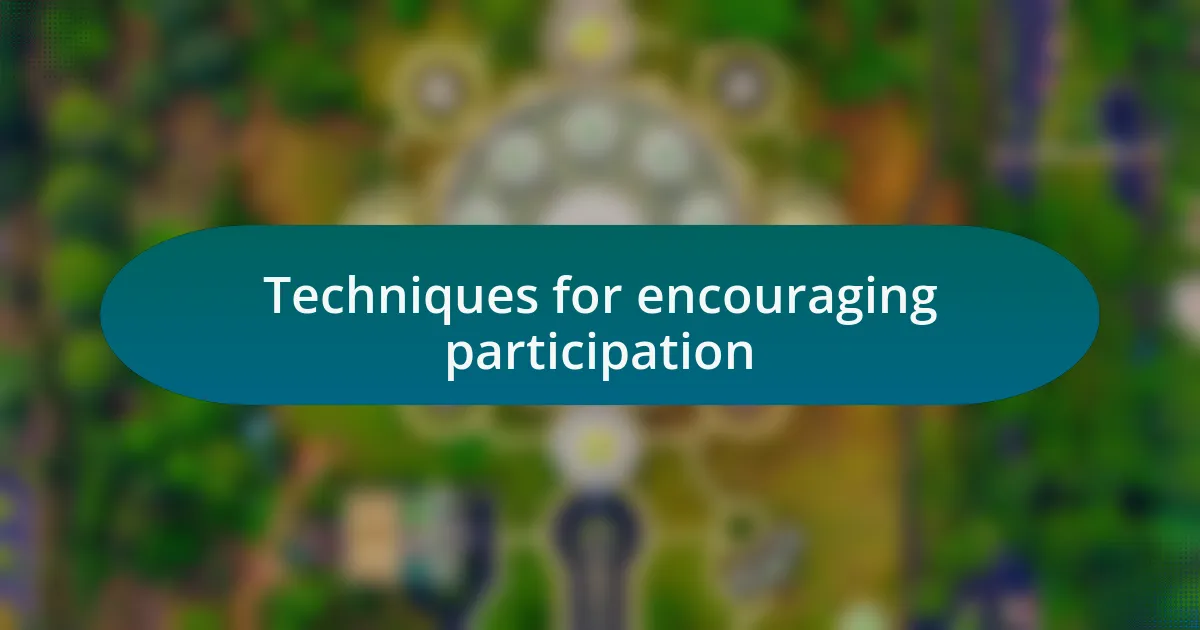
Techniques for encouraging participation
Encouraging participation can be significantly enhanced by setting the right atmosphere. I recall a workshop where I began with an icebreaker activity—simple yet effective, it eased the tension and made everyone feel welcome. When participants share their backgrounds and interests, it creates a sense of belonging that motivates them to engage further. Isn’t it remarkable how a little vulnerability can unlock a wealth of ideas and collaboration?
Another technique I’ve found successful is incorporating gamification elements into the learning process. In one session, I introduced a friendly competition where groups earned points for sharing insights or assisting fellow participants. The energy in the room shifted; suddenly, everyone was eager to contribute. Have you ever noticed how a playful challenge can energize a group and foster spontaneous participation?
Finally, utilizing technology to facilitate input can be a game changer. In a recent workshop, I employed a real-time polling tool to gather participants’ questions and topics of interest throughout the session. It was fascinating to see how this method not only kept the momentum going but also addressed concerns that might have otherwise gone unvoiced. I believe the ability to actively shape the workshop is empowering and can lead to richer discussions.
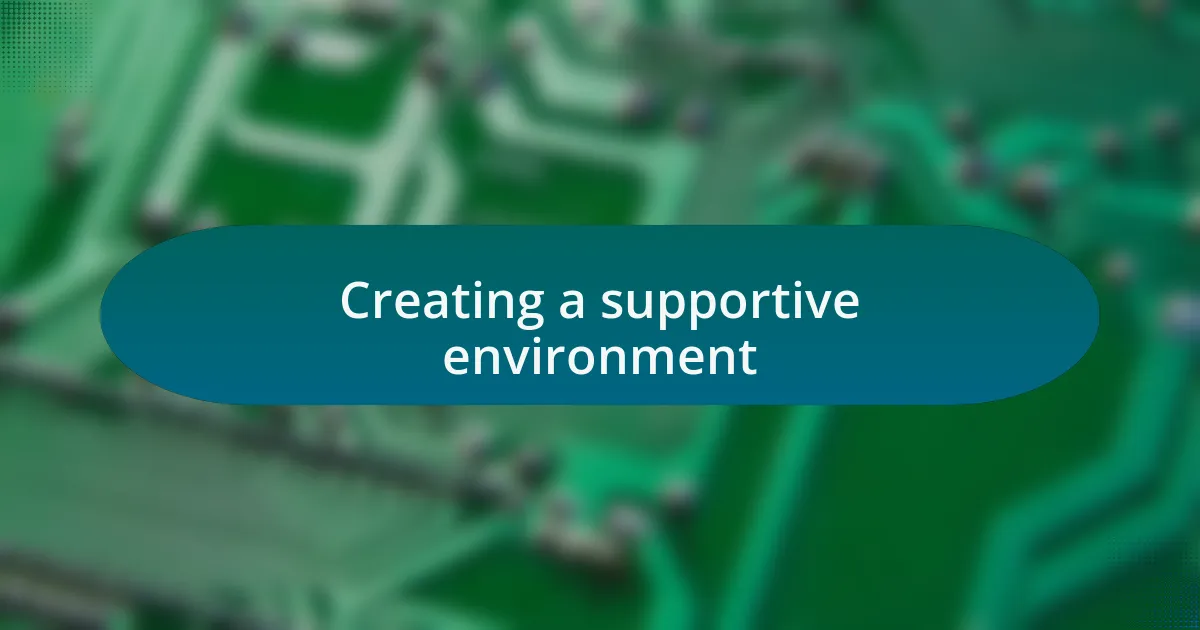
Creating a supportive environment
Creating a supportive environment lays the foundation for effective self-directed learning. I remember one workshop where I made it a priority to establish trust among participants. By allowing space for everyone to voice their thoughts without judgment, I noticed a remarkable shift—the room buzzed with ideas, and individuals felt empowered to pursue their own learning paths. Reflecting on those moments, I often wonder: how much more can we achieve if we cultivate genuine support?
Another impactful strategy is to provide ongoing encouragement throughout the workshop. I found that simple affirmations, like recognizing a great question or a unique perspective, can significantly boost confidence. During one session, a quieter participant took the plunge and shared a thought that sparked an amazing discussion. Seeing their face light up with validation was priceless—proof that acknowledgment can ignite a person’s drive to explore further.
Lastly, physical space plays a crucial role in fostering a supportive environment. In my experience, arranging chairs in a circle rather than in rows instantly creates a more inclusive feel. It invites eye contact and connection, allowing participants to engage naturally. Have you ever felt the difference in energy when you’re surrounded by faces rather than backs? The choice of setup truly influences how freely individuals share, making the learning process more collaborative and enjoyable.

Evaluating self-directed learning outcomes
Evaluating self-directed learning outcomes can sometimes feel like navigating uncharted waters, but there are effective strategies to assess progress. I’ve often used self-reflective surveys at the end of workshops. Participants share their learning experiences and their perceived growth. The real gems often emerge in their responses, revealing insights that numbers alone could never capture. One time, a participant expressed how one assignment led them to pursue a completely new skill set, sparking my curiosity about the transformative power of self-direction.
To measure the effectiveness of self-directed learning, I find it important to observe changes in participant behavior and engagement during the workshop. There was a particularly memorable session where I noticed an attendee who was initially reserved asking more questions and engaging with peers by the end. It felt rewarding to witness that shift and wonder—what sparked that newfound confidence? These observations not only highlight personal growth but also inform future workshop designs.
Of course, feedback from peers can serve as a powerful evaluation tool too. In one workshop, we implemented peer reviews where participants shared insights on each other’s projects. The feedback was candid and insightful, encouraging a deeper understanding of their work and the collective learning experience. Have you considered how collaborative feedback might enhance learning outcomes? Reflecting on these evaluations fosters a sense of community and accountability within the group.